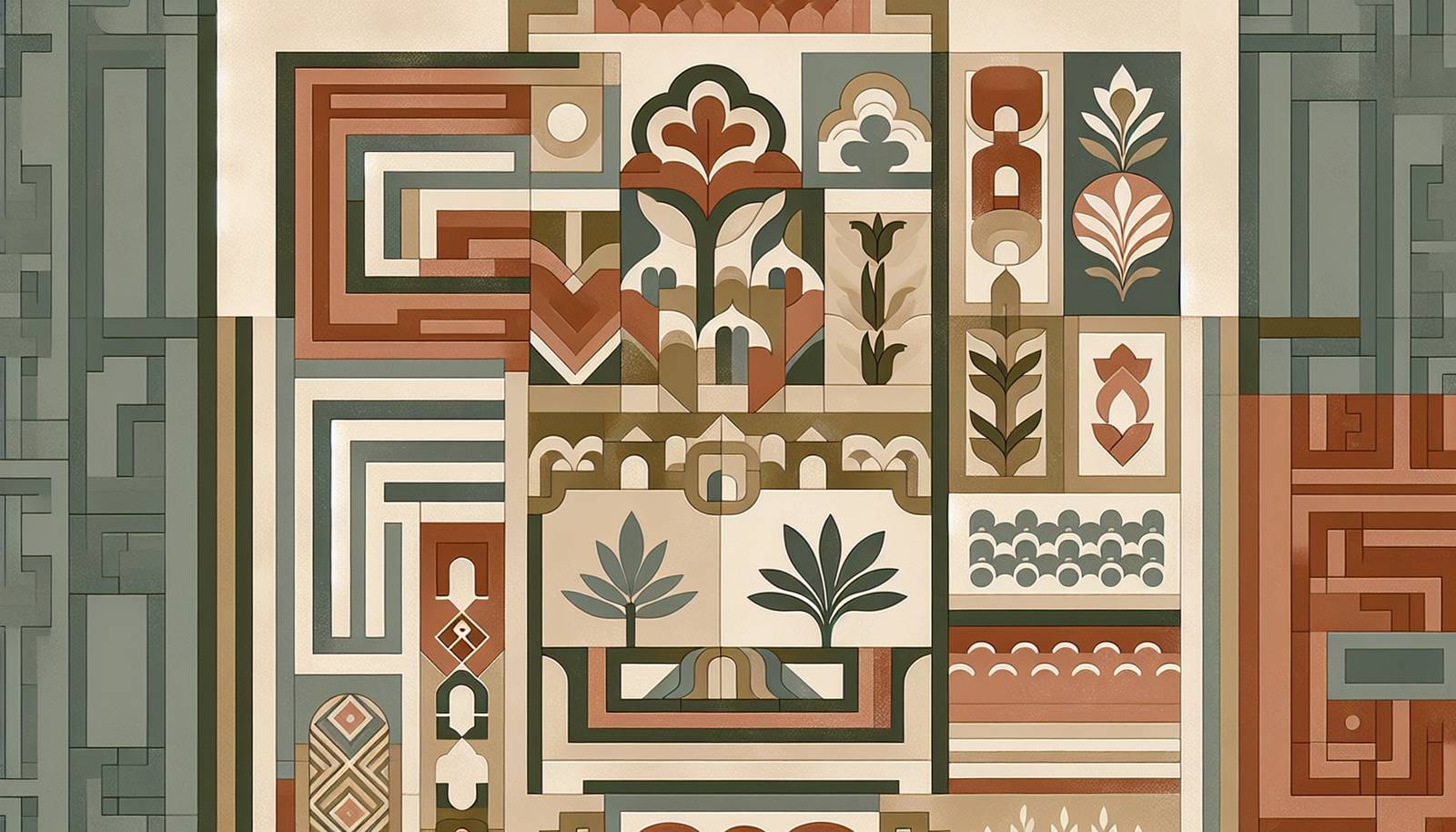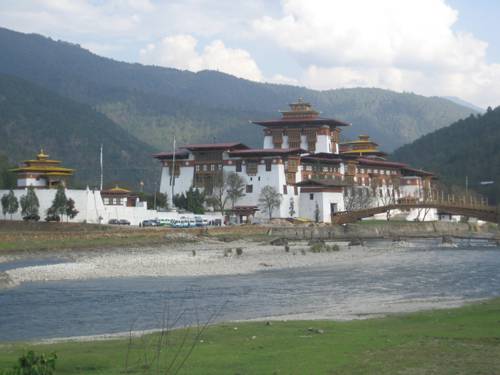
FAQ About The Influence of Bhutanese Architecture on Sustainable Building Design

What are the key features of Bhutanese architecture?
Bhutanese architecture is characterized by its use of local materials like mud, stone, and wood. Traditional structures often feature ornate woodwork and stone walls, with roofs made from wooden shingles. Aesthetic elements include intricate carvings and vibrant red, gold, and black colors, reflecting religious and cultural symbolism.

How does Bhutanese architecture promote sustainability?
Bhutanese architecture promotes sustainability primarily through its use of locally sourced materials and traditional construction techniques that minimize environmental impact. The buildings are designed to harmonize with the natural landscape, and they often incorporate features like thick walls for insulation, natural ventilation, and reliance on passive solar design principles, reducing the need for additional heating or cooling.

In what ways has Bhutanese architecture influenced modern sustainable building design?
Bhutanese architecture has contributed several principles to modern sustainable design, such as the emphasis on natural materials and integration with the environment. The aesthetic of simplicity and balance, along with passive solar energy use and efficient natural ventilation, are features adopted into modern eco-friendly buildings globally.

What materials are commonly used in Bhutanese architecture that support sustainability?
Common materials used in Bhutanese architecture include rammed earth, stone, and timber, all of which are sourced locally. These materials are chosen for their natural insulating properties and minimal environmental impact, contributing to sustainable construction practices.

Can Bhutanese architectural techniques be applied in urban settings to improve sustainability?
Yes, Bhutanese architectural techniques can be adapted to urban settings to enhance sustainability. Utilizing local materials, implementing passive design strategies for energy efficiency, and integrating green spaces are ways these traditional practices can reduce urban carbon footprints and enhance ecological harmony.

What are some examples of buildings that reflect Bhutanese architectural influence outside Bhutan?
Examples include the Paro International Airport in Bhutan, which incorporates traditional design with modern functionality, and various eco-friendly resorts around the world that adopt Bhutanese elements for aesthetic and sustainability reasons.

How do traditional Bhutanese buildings manage to be both functional and environmentally conscious?
Traditional Bhutanese buildings are designed to be functional by utilizing natural elements for climate control—such as thick walls for maintaining internal temperatures and strategic window placement for lighting and ventilation. This functional design not only fulfills practical needs but also aligns with ecological principles.

What role does cultural preservation play in the sustainable practices of Bhutanese architecture?
Cultural preservation is a vital aspect of Bhutanese architecture, ensuring that buildings reflect the country's heritage while also meeting modern sustainability standards. This approach maintains Bhutan's unique cultural identity and offers insights into sustainable living practices inherent in traditional designs.

How does the Bhutanese approach to architecture align with global sustainable development goals?
The Bhutanese approach aligns well with global sustainable development goals by promoting ecological harmony, conserving natural resources, and maintaining cultural heritage. These practices directly support goals related to sustainable cities and communities, climate action, and responsible consumption and production.

What are the challenges in integrating Bhutanese architectural principles in non-Bhutanese settings?
Challenges include adapting traditional materials and techniques to different climates and urban environments, reconciling modern building codes with traditional designs, and maintaining the cultural essence while addressing contemporary functional demands. Despite these challenges, the core principles of ecological balance and sustainability can be adapted successfully.

How have Bhutanese architecture and culture influenced international sustainable tourism design?
Bhutanese architecture has inspired sustainable tourism through its emphasis on harmony with nature and cultural integrity. Eco-lodges and resorts modeled after Bhutanese structures offer guests the opportunity to experience cultural richness while prioritizing sustainability, thus enhancing tourism's environmental and cultural value.

In what ways do Bhutanese architectural practices differ from other sustainable architecture styles worldwide?
While many sustainable architecture styles focus on high-tech solutions, Bhutanese architecture emphasizes simplicity, local materials, and traditional techniques. This cultural and materials-first approach contrasts with more technology-driven methodologies in sustainable architecture, yet both aim to achieve environmental sustainability.

How does Bhutanese architecture contribute to sustainability in terms of energy efficiency?
Bhutanese architecture contributes to energy efficiency through passive design strategies like maximizing natural light, enhancing ventilation, and using thick structural components for insulation. These strategies reduce reliance on artificial heating and cooling systems, thereby lowering energy consumption.

Are there specific design philosophies from Bhutan that are used in global sustainable architecture today?
Design philosophies such as holistic integration with the environment, the use of vernacular materials, and maintaining a balance between functionality and aesthetics are adopted worldwide. These principles ensure that buildings meet human needs while respecting natural and cultural contexts.

What is the significance of religious and cultural symbolism in Bhutanese architecture concerning sustainability?
Religious and cultural symbolism in Bhutanese architecture not only reflects the country's spiritual heritage but also underscores a respect for nature and balance. These elements are integrated with sustainable practices, creating buildings that are spiritually meaningful and environmentally conscious.

How does the concept of Gross National Happiness influence Bhutanese architectural practices?
Gross National Happiness (GNH) influences Bhutanese architecture by prioritizing well-being and ecological balance over purely economic outcomes. Architecture designed under the guidance of GNH principles seeks harmony with nature, supporting a sustainable and holistic quality of life.

What architectural features are unique to Bhutanese structures that aid in environmental conservation?
Unique features include the use of fortified rammed earth walls for insulation, intricate woodwork to minimize material wastage, and architectural designs that focus on both resilience and adaptation to climatic conditions, promoting longevity and environmental conservation.

How does Bhutanese architecture maintain ecological balance within its natural landscape?
By aligning buildings with terrains and using materials that blend with the environment, Bhutanese architecture maintains ecological balance. Structures are often built to complement natural surroundings, minimizing disruptions to ecosystems and promoting biodiversity.

Why is Bhutanese architecture significant in the conversation about sustainable and eco-friendly design?
Bhutanese architecture is significant because it presents a successful model of integrating cultural values with ecological principles. Its emphasis on local materials, minimal environmental impact, and cultural continuity provides valuable lessons for sustainable architecture on a global scale.
